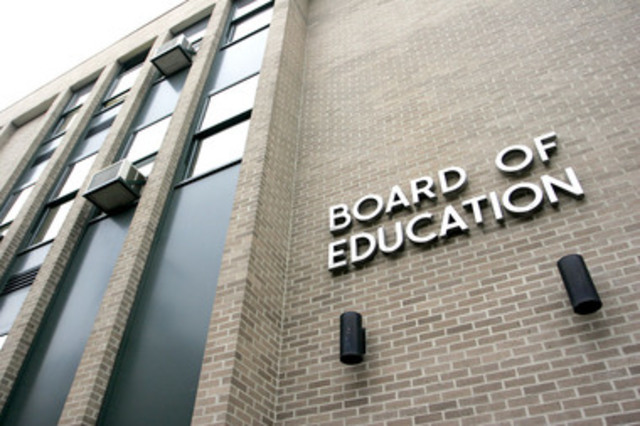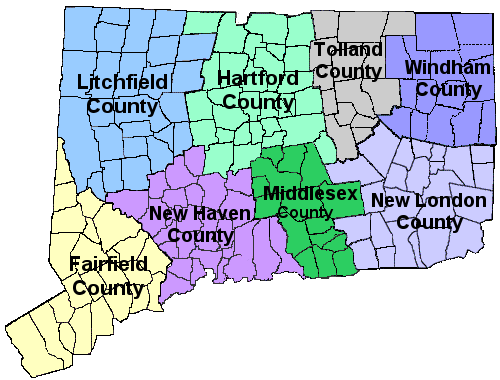
The other day I read a Facebook post from a parent asking about “good” special education school districts in the state. This is an incredibly popular question that I see very frequently on a variety of groups in a variety of geographic regions. When I scanned the responses, I saw a lot of advice, and a lot of the advice was contradictory. For every person recommending District A, there was a corresponding parent with a negative response. The sheer number of posts was overwhelming.
I have spent a lot of time writing about various independent schools and how to determine which school is right for your child; the question of how to find the right district for your child with special education needs, however, is infinitely more challenging. So how does one find a good school district for students with special education needs? Word of mouth, generally so effective with doctors and therapists and other things, doesn’t work as well for school districts. As I said before, for every person that has a good experience there will be another relating a negative one. In addition, I have seen students with the same diagnosis at the same school in the same district have vastly different experiences.
What constitutes a “good” school district versus a “bad” school district? The answer will depend on who you ask. Attorneys (I’m generalizing here) tend think a good school district is one that recognizes when a child has issues that can’t be solved in the existing district setting, and seeks to find alternate placement for that child. They also tend to view school districts where they have a good working relationship with the head of special education as better than others, and those where they have good relationships with the board attorneys as “good” as well. Don’t forget that an attorney’s success against a particular school district can also play into this assessment.
To parents, “good” can mean many things. Most parents start the process thinking that good school districts for education are school districts which have a lot of resources – the so-called “wealthy” school districts. This is a topic for an entirely different discussion, but let’s start out by saying that just because a school district appears well funded and/or the town is generally thought to be a wealthy community does not necessarily mean the district will have robust special education services. High test scores, exceptional sports teams, state-of-the-art buildings, and impressive college acceptance rates do not necessarily correlate with “good” special education services.
Don’t beat yourself up if you can’t afford to live in one of those districts, because the metrics that make them “good” in real-estate speak do not mean they provide exceptional services for kids with learning needs. Not everyone has the privilege to even contemplate selecting school districts based on special education services. Lots of families have their field of choice significantly narrowed significantly by housing costs, employment opportunities, job commute, and other factors. But don’t despair if you are priced out of one of these districts.
“Good” school districts for a child often depend on what type of learning needs your child has. For example, a student with dyslexia will have very different learning needs than a student with autism, Down syndrome, complex medical needs, cerebral palsy, etc. It’s not uncommon for a school district to have a specialized program for one particular learning need, but not have specific instruction for another type of learning need.
While parents’ definitions of “good” can differ, when most parents refer to a good school district for special education, they are referring to their own special education school team. Parents sometimes use “good school district” and “good school team” interchangeably when in fact they are two different entities entirely. A good school team is a team that is supportive, empathetic, and responsive. Teams change each year, even within the same district and school, and the change in one year or one person can have a material impact on that team and that child’s experience. Families within the same school can experience great first grade years and miserable second grade years due to slight changes in the team. Also, what works for your child in elementary school may not work in middle school, high school, or during the years within those schools.
Connecticut has over 200 school districts. Special Education Legal Fund has provided grants for legal support to families in over 40 of those districts and seen applications from many, many more. There is no one (or two, or three) school district that is uniformly “good” for special education. All school districts, particularly now, are beset by the twin issues of serving a growing population of students (those with special education needs) where the costs to serve that population is also growing. School districts can deal with those twin inflationary pressures by keeping a lid on numbers (the kids identified as needing sped services) or a lid on expenses (the services and personnel required to serve those needs). And right now, due to the pandemic, schools are even more short staffed than ever before due to illness, COVID, and a workforce exodus.

So you have probably narrowed your list of towns to a workable number, driven by a number of factors including commuting time, housing costs and availability, proximity to family, etc. Don’t underestimate commuting time. You will need to take time off to attend PPT meetings several times a year and the closer you are to school, the less onerous this will be. Also, let’s be realistic – your child will, at some point, have some kind of issue (health, school, or otherwise) and need to be picked up early. There are very few drives as psychically long as the one you will make at midday racing to school when your child is in crisis or has desperate need of you.
When I talk about support services, think about the services that your child access out of school currently, but don’t forget there will be additional services (perhaps not as common as speech, OT, PT) that you might not know you need yet. Doctors, specialists, psychologists, psychiatrists, BCBAs fall into this category along with speech, OT and PT but also don’t forget about tutors, executive function coaches, and other types of therapy (feeding, vision, art, horseback riding, music, etc). At any given point, it can be hard to know what support a child or children will need over the course of their educational career. Plus you may, at any point, find yourself ripping apart your child’s support services team and starting from scratch. If you situate yourself in or close to an area with a community of good professionals, that’s a great start and will make life easier down the road.
Now, how do you find that community of good professionals? I grew up in a city where a large multinational pharmaceutical company had established its headquarters more than a century ago. Not only was the big pharma company a major employer in the area, but its presence has led to, over time, a preponderance of doctors and health professionals that gathered to live and work in the community. Does the community you are looking at have an established independent special education school or schools? While you may never intend to place your child, either through your own efforts or as part of a district outplacement, at private sped school, their existence in a community is a sign that the community has a network of professionals that service students with special education needs.
Another factor for families in selecting a school district with “good” special education services is community inclusivity. Inclusivity here refers to how welcoming and accepting a community is about people with disabilities. Are there organizations that support lifelong inclusion within the town? In recent years, we’ve seen a proliferation of nonprofit organizations that support employment for individuals with disabilities, with an emphasis on working and living in the community. The Prospector Theater in Ridgefield, Woofgang & Co in Fairfield, ReRead Books in Cheshire, and Coffee for Good in Greenwich are all wonderful organizations that provide employment and life skills training for adults with disabilities in a community setting. The existence of these organizations in these towns isn’t proof that these communities are any more accepting than any others. However, for those families who are looking not only for a school district with good supports but a community with a lifetime of integrated opportunities, this can be a good sign.
We always talk about using data in the special education process to evaluate where your student is and if his or plan is working. The same thing is true for the process of identifying the right school district- use data. After you’ve narrowed your list to something workable, my advice would be to visit the Connecticut Department of Education website EdSight. EdSight is a database that provides every number you could possibly imagine about every school and school district in the state of Connecticut. It is a social scientist’s dream and it is compiled in compliance with the requirements of IDEA.

EdSight has a ton of special education specific data available – if you click on the tab “students” you will see a drop down for “students with disabilities.” Here you can look by district for specific information about students with disabilities by district. In other sections of the website, you can access school-specific “report cards” which give information on individual schools. Play around with the website and compare various districts with one another and various schools within districts. One ratio might not mean anything to you but once you compare it to the state’s average, other school districts and the trend over time (going up? going down? stable?), you will start to get more clarity on your search and how to think about different school districts with real data not just anecdotes.
Here, it’s not necessarily the numbers themselves that are important, it’s how you look at them. Take the percentage of students with a disability in a district. Compare this number to the state average. Is it higher than the state average, or lower? A higher number than the average could mean that that district has greater expertise in educating students with disabilities because of the numbers and prevalence. A lower number could mean the opposite; a lower number could mean there are less students with disabilities in that district, but it could also mean that the district is less proactive or less willing or less able to identify students with disabilities. The statistics all provide important data points that you can use to explore additional questions in a deeper and more personal way. Restraint and seclusion statistics, adjudicated due process hearings for special education matters, and much more are included on EdSight so take some time to research and explore.
Having narrowed your list again through a careful perusal of EdSight, now it’s time for the anecdotal feedback – with a grain of salt. Many school districts have a special education parent association – SEPTA. Reach out to the representatives from the school district SEPTA with specific questions about special education in that district. Specific questions about specific schools, the relationship between parents and schools, even questions about the special education supervisor are all specific and targeted to give you a sense of the district, schools within the district, and special education programming. Also, school districts with active SEPTAs are generally school districts with an active and informed special education parent community, which can often correlate with better services, more inclusive attitudes, and a more welcoming community etc.
School districts in Connecticut are all sizes. They run the gamut from large urban centers to small rural communities. The school experience can differ greatly within a school district and between years. For example, maybe the town you are looking at has one BCBA (board certified behavioral analyst) based at one school and one prompt trained speech and language pathologist in a different elementary school. This may have an impact on where you want to be within a particular district. This is where parental feedback at its most granular can help provide feedback and information for your and your child. Not in asking “what’s a good school district for special education?” but in asking specific and targeted questions about specific schools based on your child’s specific needs.
Over the weekend I spoke to a mother who had recently moved and was unhappy with the new school and community. This parent had been a member of her town’s school board, and is an education professional who works with children in special education. She was upset because she had done all the research, kicked all the tires, moved the family, and the new school district hadn’t worked out. Always remember that it’s okay to make mistakes! Sometimes you can do all the research in the world and things just doesn’t work out the way you planned. Remember that having children with special education need often means that things will be in flux. And always remember that you make the best decision that you can with the information you have at the time. Don’t be afraid to reframe, readjust, or just plain change your mind based on new information that you’ve gained along the way.
DISCLAIMER: This guide was written by a parent for parents. It is intended as a resource for families who are navigating the special education system in Connecticut and is meant to provide a basic understanding of special education school districts in those regions from a parent’s perspective. The author is not an attorney, advocate, or education consultant, and the views expressed in this article are the author’s alone and do not represent the opinions or views of Special Education Legal Fund or its Board of Directors. This guide is not intended to provide legal support, advice, or assistance, nor is it intended to replace the advice of a qualified special education attorney. Families in need of legal advice, support, and assistance should contact a special education attorney licensed to practice in Connecticut or New York to discuss the specific needs of their individual student.